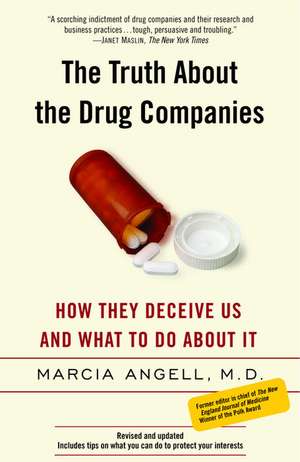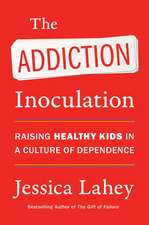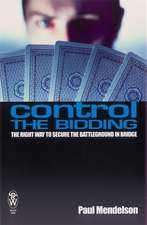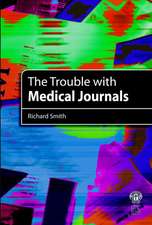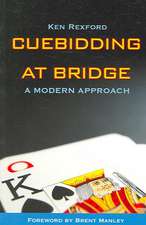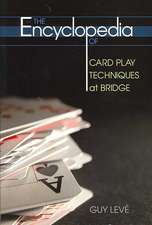The Truth about the Drug Companies: How They Deceive Us and What to Do about It
Autor ANGELL MARCIAen Limba Engleză Paperback – 8 aug 2005
Currently Americans spend a staggering $200 billion each year on prescription drugs. As Dr. Angell powerfully demonstrates, claims that high drug prices are necessary to fund research and development are unfounded: The truth is that drug companies funnel the bulk of their resources into the marketing of products of dubious benefit. Meanwhile, as profits soar, the companies brazenly use their wealth and power to push their agenda through Congress, the FDA, and academic medical centers.
Zeroing in on hugely successful drugs like AZT (the first drug to treat HIV/AIDS), Taxol (the best-selling cancer drug in history), and the blockbuster allergy drug Claritin, Dr. Angell demonstrates exactly how new products are brought to market. Drug companies, she shows, routinely rely on publicly funded institutions for their basic research; they rig clinical trials to make their products look better than they are; and they use their legions of lawyers to stretch out government-granted exclusive marketing rights for years. They also flood the market with copycat drugs that cost a lot more than the drugs they mimic but are no more effective.
The American pharmaceutical industry needs to be saved, mainly from itself, and Dr. Angell proposes a program of vital reforms, which includes restoring impartiality to clinical research and severing the ties between drug companies and medical education. Written with fierce passion and substantiated with in-depth research, The Truth About the Drug Companies is a searing indictment of an industry that has spun out of control.
Preț: 78.67 lei
Preț vechi: 94.53 lei
-17% Nou
Puncte Express: 118
Preț estimativ în valută:
15.06€ • 16.36$ • 12.66£
15.06€ • 16.36$ • 12.66£
Carte disponibilă
Livrare economică 31 martie-07 aprilie
Livrare express 15-21 martie pentru 36.77 lei
Preluare comenzi: 021 569.72.76
Specificații
ISBN-13: 9780375760945
ISBN-10: 0375760946
Pagini: 319
Dimensiuni: 136 x 201 x 19 mm
Greutate: 0.27 kg
Editura: Random House Trade
ISBN-10: 0375760946
Pagini: 319
Dimensiuni: 136 x 201 x 19 mm
Greutate: 0.27 kg
Editura: Random House Trade
Notă biografică
Former editor-in-chief of The New England Journal of Medicine and now a member of Harvard Medical School’s Department of Social Medicine, Marcia Angell is a nationally recognized authority in the field of health policy and medical ethics and an outspoken critic of the health care system. Time magazine named her one of the twenty-five most influential people in America. Dr. Angell is the author of Science on Trial: The Clash of Medical Evidence and the Law in the Breast Implant Case.
From the Hardcover edition.
From the Hardcover edition.
Recenzii
“Dr. Angell’s case is tough, persuasive, and troubling.”
—The New York Times
“In what should serve as the Fast Food Nation of the drug industry, Angell… presents a searing indictment of ‘big pharma’ as corrupt and corrupting.”
—Publishers Weekly
“The Truth About the Drug Companies is a sober, clear-eyed attack on the excesses of drug company power… a lucid, persuasive, and highly important book.”
—The Boston Sunday Globe
“Her prose is clear and readable… Angell does an excellent job [making] a convincing case against Big Pharma.”
—Chicago Sun-Times
“If you’ve ever suffered prescription drug sticker shock, Dr. Marcia Angell’s The Truth About the Drug Companies is the book for you.”
—Newsday
“In-depth and insightful”
—Rocky Mountain News
“Put your money on Angell. We need to know why drugs cost what they do, and we need to know how our physicians choose the drugs they give us.”
—St. Louis Post Dispatch
“Engaging and well-written”
—San Antonio Express-News
"Pharamceutical companies will need a new miracle pain reliever after the whipping they receive from Marcia Angell in her book….a starting point for serious discussion."
--The Hartford Courant
"If informed criticism contains the sharpest stings, author Marcia Angell's jolting indictument of 'Big Pharma' might just be enough to pierce the beast's hide."
--Minneapolis Star Tribune
—The New York Times
“In what should serve as the Fast Food Nation of the drug industry, Angell… presents a searing indictment of ‘big pharma’ as corrupt and corrupting.”
—Publishers Weekly
“The Truth About the Drug Companies is a sober, clear-eyed attack on the excesses of drug company power… a lucid, persuasive, and highly important book.”
—The Boston Sunday Globe
“Her prose is clear and readable… Angell does an excellent job [making] a convincing case against Big Pharma.”
—Chicago Sun-Times
“If you’ve ever suffered prescription drug sticker shock, Dr. Marcia Angell’s The Truth About the Drug Companies is the book for you.”
—Newsday
“In-depth and insightful”
—Rocky Mountain News
“Put your money on Angell. We need to know why drugs cost what they do, and we need to know how our physicians choose the drugs they give us.”
—St. Louis Post Dispatch
“Engaging and well-written”
—San Antonio Express-News
"Pharamceutical companies will need a new miracle pain reliever after the whipping they receive from Marcia Angell in her book….a starting point for serious discussion."
--The Hartford Courant
"If informed criticism contains the sharpest stings, author Marcia Angell's jolting indictument of 'Big Pharma' might just be enough to pierce the beast's hide."
--Minneapolis Star Tribune
Extras
Chapter 1
The $200 Billion Colossus
What does the eight-hundred-pound gorilla do?
Anything it wants to.
What’s true of the eight-hundred-pound gorilla is true of the colossus that is the pharmaceutical industry. It is used to doing pretty much what it wants to do. The watershed year was 1980. Before then, it was a good business, but afterward, it was a stupendous one. From 1960 to 1980, prescription drug sales were fairly static as a percent of U.S. gross domestic product, but from 1980 to 2000, they tripled. They now stand at more than $200 billion a year. Furthermore, since the early 1980s, this industry has consistently ranked as the most profitable in the United States—by a long shot. (Only in 2003 did it fall from that position to rank third among the forty-seven industries listed in the Fortune 500.) Of the many events that contributed to their sudden great and good fortune, none had to do with the quality of the drugs the companies were selling.
In this chapter I’ll give you an overview of the pharmaceutical industry—its meteoric rise and the recent, early signs of either a coming fall or an overhaul. I will not go into much detail here, I’ll leave that to later chapters. What I want to do now is provide a quick look at what’s under this rock when it’s lifted. It’s not a pretty sight.
Before I begin, a few words about the facts and figures I will use throughout the book. In most cases, I use data from the year 2001, because it is the most recent year for which information is reasonably complete for all the aspects of the industry I will consider. If I stick with one year, it will make it easier to see the whole picture. But for some important facts, I will use figures from 2002 and, whenever possible, 2003. In all cases, I will make it clear what year I am talking about.
I also need to explain what I mean when I say this is a $200 billion industry. According to government sources, that is roughly how much Americans spent on prescription drugs in 2002. That figure refers to direct consumer purchases at drugstores and mail order pharmacies (whether paid for out of pocket or not), and it includes the nearly 25 percent markup for wholesalers, pharmacists, and other middlemen and retailers. But it does not include the large amounts spent for drugs administered in hospitals, nursing homes, or doctors’ offices (as is the case for many cancer drugs). In most analyses, they are allocated to costs for those facilities.
Drug company revenues (or sales) are a little different, at least as they are reported in summaries of corporate annual reports. They usually refer to a company’s worldwide sales, including those to health facilities. But they do not include the revenues of middlemen and retailers.
Perhaps the most quoted source of statistics on the pharmaceutical industry, IMS Health, estimated total worldwide sales for prescription drugs to be about $400 billion in 2002. About half were in the United States. So the $200 billion colossus is really a $400 billion megacolossus, but my focus in this book will be mainly on how the drug companies operate in the United States.
You should understand, however, that it is virtually impossible to be precise about most of these figures. Before drugs reach consumers, they pass through many hands and are paid for in exceedingly complicated, often hidden, ways. It is easy to compare apples and oranges without knowing it. You need to ask, for example, whether a number refers just to prescription drugs or includes over-the-counter drugs and other consumer products made by drug companies; whether it includes revenues for middlemen and retailers or not; whether it refers just to outpatient consumer purchases or also to health facility purchases; and whether it includes mail order purchases.
Let the Good Times Roll
The election of Ronald Reagan in 1980 was perhaps the most fundamental element in the rapid rise of big pharma—the collective name for the largest drug companies. With the Reagan administration came a strong pro-business shift not only in government policies but in society at large. And with the shift, the public attitude toward great wealth changed. Before then, there was something faintly disreputable about really big fortunes. You could choose to do well or you could choose to do good, but most people who had any choice in the matter thought it difficult to do both. That belief was particularly strong among scientists and other intellectuals. They could choose to live a comfortable but not luxurious life in academia, hoping to do exciting cutting-edge research, or they could “sell out” to industry and do less important but more remunerative work. Starting in the Reagan years and continuing through the 1990s, Americans changed their tune. It became not only reputable to be wealthy, but something close to virtuous. There were “winners” and there were “losers,” and the winners were rich and deserved to be. The gap between the rich and poor, which had been narrowing since World War II, suddenly began to widen again, until today it is a yawning chasm.
The pharmaceutical industry and its CEOs quickly joined the ranks of the winners as a result of a number of business-friendly government actions. I won’t enumerate all of them, but two are especially important. Beginning in 1980, Congress enacted a series of laws designed to speed the translation of tax-supported basic research into useful new products—a process sometimes referred to as “technology transfer.” The goal was also to improve the position of American-owned high-tech businesses in world markets. The most important of these laws is known as the Bayh-Dole Act, after its chief sponsors, Senator Birch Bayh (D-Ind.) and Senator Robert Dole (R-Kans.). Bayh-Dole enabled universities and small businesses to patent discoveries emanating from research sponsored by the National Institutes of Health (NIH), the major distributor of tax dollars for medical research, and then to grant exclusive licenses to drug companies. Until then, taxpayer-financed discoveries were in the public domain, available to any company that wanted to use them. But now universities, where most NIH-sponsored work is carried out, can patent and license their discoveries, and charge royalties. Similar legislation permitted the NIH itself to enter into deals with drug companies that would directly transfer NIH discoveries to industry.
Bayh-Dole gave a tremendous boost to the nascent biotechnology industry, as well as to big pharma. Small biotech companies, many of them founded by university researchers to exploit their discoveries, proliferated rapidly. They now ring the major academic research institutions and often carry out the initial phases of drug development, hoping for lucrative deals with big drug companies that can market the new drugs. Usually both academic researchers and their institutions own equity in the biotechnology companies they are involved with. Thus, when a patent held by a university or a small biotech company is eventually licensed to a big drug company, all parties cash in on the public investment in research.
These laws mean that drug companies no longer have to rely on their own research for new drugs, and few of the large ones do. Increasingly, they rely on academia, small biotech start-up companies, and the NIH for that. At least a third of drugs marketed by the major drug companies are now licensed from universities or small biotech companies, and these tend to be the most innovative ones. While Bayh-Dole was clearly a bonanza for big pharma and the biotech industry, whether it is a net benefit to the public is arguable (I’ll come back to that).
The Reagan years and Bayh-Dole also transformed the ethos of medical schools and teaching hospitals. These nonprofit institutions started to see themselves as “partners” of industry, and they became just as enthusiastic as any entrepreneur about the opportunities to parlay their discoveries into financial gain. Faculty researchers were encouraged to obtain patents on their work (which were assigned to their universities), and they shared in the royalties. Many medical schools and teaching hospitals set up “technology transfer” offices to help in this activity and capitalize on faculty discoveries. As the entrepreneurial spirit grew during the 1990s, medical school faculty entered into other lucrative financial arrangements with drug companies, as did their parent institutions. One of the results has been a growing pro-industry bias in medical research—exactly where such bias doesn’t belong. Faculty members who had earlier contented themselves with what was once referred to as a “threadbare but genteel” lifestyle began to ask themselves, in the words of my grandmother, “If you’re so smart, why aren’t you rich?” Medical schools and teaching hospitals, for their part, put more resources into searching for commercial opportunities.
Starting in 1984, with legislation known as the Hatch-Waxman Act, Congress passed another series of laws that were just as big a bonanza for the pharmaceutical industry. These laws extended monopoly rights for brand-name drugs. Exclusivity is the lifeblood of the industry because it means that no other company may sell the same drug for a set period. After exclusive marketing rights expire, copies (called generic drugs) enter the market, and the price usually falls to as little as 20 percent of what it was. There are two forms of monopoly rights—patents granted by the U.S. Patent and Trademark Office (USPTO) and exclusivity granted by the Food and Drug Administration (FDA). While related, they operate somewhat independently, almost as backups for each other. Hatch-Waxman, named for Senator Orrin Hatch (R-Utah) and Representative Henry Waxman (D-Calif.), was meant mainly to stimulate the foundering generic industry by short-circuiting some of the FDA requirements for bringing generic drugs to market. While successful in doing that, Hatch-Waxman also lengthened the patent life for brand-name drugs. Since then, industry lawyers have manipulated some of its provisions to extend patents far longer than the lawmakers intended.
In the 1990s, Congress enacted other laws that further increased the patent life of brand-name drugs. Drug companies now employ small armies of lawyers to milk these laws for all they’re worth—and they’re worth a lot. The result is that the effective patent life of brand-name drugs increased from about eight years in 1980 to about fourteen years in 2000. For a blockbuster—usually defined as a drug with sales of over a billion dollars a year (like Lipitor or Celebrex or Zoloft)—those six years of additional exclusivity are golden. They can add billions of dollars to sales—enough to buy a lot of lawyers and have plenty of change left over. No wonder big pharma will do almost anything to protect exclusive marketing rights, despite the fact that doing so flies in the face of all its rhetoric about the free market.
Riding High
As their profits skyrocketed during the 1980s and 1990s, so did the political clout of drug companies. By 1990, the industry had assumed its present contours as a business with unprecedented control over its own fortunes. For example, if it didn’t like something about the FDA, the federal agency that is supposed to regulate the industry, it could change it through direct pressure or through its friends in Congress. The top ten drug companies (which included European companies) had profits of nearly 25 percent of sales in 1990, and except for a dip at the time of President Bill Clinton’s health care reform proposal, profits as a percentage of sales remained about the same for the next decade. (Of course, in absolute terms, as sales mounted, so did profits.) In 2001, the ten American drug companies in the Fortune 500 list (not quite the same as the top ten worldwide, but their profit margins are much the same) ranked far above all other American industries in average net return, whether as a percentage of sales (18.5 percent), of assets (16.3 percent), or of shareholders’ equity (33.2 percent). These are astonishing margins. For comparison, the median net return for all other industries in the Fortune 500 was only 3.3 percent of sales. Commercial banking, itself no slouch as an aggressive industry with many friends in high places, was a distant second, at 13.5 percent of sales.
In 2002, as the economic downturn continued, big pharma showed only a slight drop in profits—from 18.5 to 17.0 percent of sales. The most startling fact about 2002 is that the combined profits for the ten drug companies in the Fortune 500 ($35.9 billion) were more than the profits for all the other 490 businesses put together ($33.7 billion). In 2003, profits of the Fortune 500 drug companies dropped to 14.3 percent of sales, still well above the median for all industries of 4.6 percent for the year. When I say this is a profitable industry, I mean really profitable. It is difficult to conceive of how awash in money big pharma is.
Drug industry expenditures for research and development, while large, were consistently far less than profits. For the top ten companies, they amounted to only 11 percent of sales in 1990, rising slightly to 14 percent in 2000. The biggest single item in the budget is neither R & D nor even profits but something usually called “marketing and administration”—a name that varies slightly from company to company. In 1990, a staggering 36 percent of sales revenues went into this category, and that proportion remained about the same for over a decade. Note that this is two and a half times the expenditures for R & D.
These figures are drawn from the industry’s own annual reports to the Securities and Exchange Commission (SEC) and to stockholders, but what actually goes into these categories is not at all clear, because drug companies hold that information very close to their chests. It is likely, for instance, that R & D includes many activities most people would consider marketing, but no one can know for sure. For its part, “marketing and administration” is a gigantic black box that probably includes what the industry calls “education,” as well as advertising and promotion, legal costs, and executive salaries—which are whopping. According to a report by the nonprofit group Families USA, the former chairman and CEO of Bristol-Myers Squibb, Charles A. Heimbold, Jr., made $74,890,918 in 2001, not counting his $76,095,611 worth of unexercised stock options. The chairman of Wyeth made $40,521,011, exclusive of his $40,629,459 in stock options. And so on. This is an industry that amply rewards its own.
In recent years, the top ten companies have included five European giants—GlaxoSmithKline, AstraZeneca, Novartis, Roche, and Aventis. Their profit margins are similar to those of their American counterparts, and so are their expenditures for R & D and marketing and administration. Furthermore, they are members of the industry’s trade association, the misleadingly named Pharmaceutical Research and Manufacturers of America (PhRMA). Recently I heard Daniel Vasella, the chairman and CEO of Novartis, speak at a conference. He was clearly pleased with the American commercial and research climate. “Free pricing and fast approval secure rapid access to innovation without rationing,” he said, sounding like the most red-blooded of Americans, despite his charming Swiss accent. His company is now moving its research operations to a site near the Massachusetts Institute of Technology (MIT), a hotbed of basic research surrounded by biotechnology companies. I suspect the move has nothing to do with “free pricing and fast approval” at all, and everything to do with the opportunity to profit from U.S. taxpayer-funded research under the terms of Bayh-Dole, and from the proximity of U.S. medical scientists who do the research.
The $200 Billion Colossus
What does the eight-hundred-pound gorilla do?
Anything it wants to.
What’s true of the eight-hundred-pound gorilla is true of the colossus that is the pharmaceutical industry. It is used to doing pretty much what it wants to do. The watershed year was 1980. Before then, it was a good business, but afterward, it was a stupendous one. From 1960 to 1980, prescription drug sales were fairly static as a percent of U.S. gross domestic product, but from 1980 to 2000, they tripled. They now stand at more than $200 billion a year. Furthermore, since the early 1980s, this industry has consistently ranked as the most profitable in the United States—by a long shot. (Only in 2003 did it fall from that position to rank third among the forty-seven industries listed in the Fortune 500.) Of the many events that contributed to their sudden great and good fortune, none had to do with the quality of the drugs the companies were selling.
In this chapter I’ll give you an overview of the pharmaceutical industry—its meteoric rise and the recent, early signs of either a coming fall or an overhaul. I will not go into much detail here, I’ll leave that to later chapters. What I want to do now is provide a quick look at what’s under this rock when it’s lifted. It’s not a pretty sight.
Before I begin, a few words about the facts and figures I will use throughout the book. In most cases, I use data from the year 2001, because it is the most recent year for which information is reasonably complete for all the aspects of the industry I will consider. If I stick with one year, it will make it easier to see the whole picture. But for some important facts, I will use figures from 2002 and, whenever possible, 2003. In all cases, I will make it clear what year I am talking about.
I also need to explain what I mean when I say this is a $200 billion industry. According to government sources, that is roughly how much Americans spent on prescription drugs in 2002. That figure refers to direct consumer purchases at drugstores and mail order pharmacies (whether paid for out of pocket or not), and it includes the nearly 25 percent markup for wholesalers, pharmacists, and other middlemen and retailers. But it does not include the large amounts spent for drugs administered in hospitals, nursing homes, or doctors’ offices (as is the case for many cancer drugs). In most analyses, they are allocated to costs for those facilities.
Drug company revenues (or sales) are a little different, at least as they are reported in summaries of corporate annual reports. They usually refer to a company’s worldwide sales, including those to health facilities. But they do not include the revenues of middlemen and retailers.
Perhaps the most quoted source of statistics on the pharmaceutical industry, IMS Health, estimated total worldwide sales for prescription drugs to be about $400 billion in 2002. About half were in the United States. So the $200 billion colossus is really a $400 billion megacolossus, but my focus in this book will be mainly on how the drug companies operate in the United States.
You should understand, however, that it is virtually impossible to be precise about most of these figures. Before drugs reach consumers, they pass through many hands and are paid for in exceedingly complicated, often hidden, ways. It is easy to compare apples and oranges without knowing it. You need to ask, for example, whether a number refers just to prescription drugs or includes over-the-counter drugs and other consumer products made by drug companies; whether it includes revenues for middlemen and retailers or not; whether it refers just to outpatient consumer purchases or also to health facility purchases; and whether it includes mail order purchases.
Let the Good Times Roll
The election of Ronald Reagan in 1980 was perhaps the most fundamental element in the rapid rise of big pharma—the collective name for the largest drug companies. With the Reagan administration came a strong pro-business shift not only in government policies but in society at large. And with the shift, the public attitude toward great wealth changed. Before then, there was something faintly disreputable about really big fortunes. You could choose to do well or you could choose to do good, but most people who had any choice in the matter thought it difficult to do both. That belief was particularly strong among scientists and other intellectuals. They could choose to live a comfortable but not luxurious life in academia, hoping to do exciting cutting-edge research, or they could “sell out” to industry and do less important but more remunerative work. Starting in the Reagan years and continuing through the 1990s, Americans changed their tune. It became not only reputable to be wealthy, but something close to virtuous. There were “winners” and there were “losers,” and the winners were rich and deserved to be. The gap between the rich and poor, which had been narrowing since World War II, suddenly began to widen again, until today it is a yawning chasm.
The pharmaceutical industry and its CEOs quickly joined the ranks of the winners as a result of a number of business-friendly government actions. I won’t enumerate all of them, but two are especially important. Beginning in 1980, Congress enacted a series of laws designed to speed the translation of tax-supported basic research into useful new products—a process sometimes referred to as “technology transfer.” The goal was also to improve the position of American-owned high-tech businesses in world markets. The most important of these laws is known as the Bayh-Dole Act, after its chief sponsors, Senator Birch Bayh (D-Ind.) and Senator Robert Dole (R-Kans.). Bayh-Dole enabled universities and small businesses to patent discoveries emanating from research sponsored by the National Institutes of Health (NIH), the major distributor of tax dollars for medical research, and then to grant exclusive licenses to drug companies. Until then, taxpayer-financed discoveries were in the public domain, available to any company that wanted to use them. But now universities, where most NIH-sponsored work is carried out, can patent and license their discoveries, and charge royalties. Similar legislation permitted the NIH itself to enter into deals with drug companies that would directly transfer NIH discoveries to industry.
Bayh-Dole gave a tremendous boost to the nascent biotechnology industry, as well as to big pharma. Small biotech companies, many of them founded by university researchers to exploit their discoveries, proliferated rapidly. They now ring the major academic research institutions and often carry out the initial phases of drug development, hoping for lucrative deals with big drug companies that can market the new drugs. Usually both academic researchers and their institutions own equity in the biotechnology companies they are involved with. Thus, when a patent held by a university or a small biotech company is eventually licensed to a big drug company, all parties cash in on the public investment in research.
These laws mean that drug companies no longer have to rely on their own research for new drugs, and few of the large ones do. Increasingly, they rely on academia, small biotech start-up companies, and the NIH for that. At least a third of drugs marketed by the major drug companies are now licensed from universities or small biotech companies, and these tend to be the most innovative ones. While Bayh-Dole was clearly a bonanza for big pharma and the biotech industry, whether it is a net benefit to the public is arguable (I’ll come back to that).
The Reagan years and Bayh-Dole also transformed the ethos of medical schools and teaching hospitals. These nonprofit institutions started to see themselves as “partners” of industry, and they became just as enthusiastic as any entrepreneur about the opportunities to parlay their discoveries into financial gain. Faculty researchers were encouraged to obtain patents on their work (which were assigned to their universities), and they shared in the royalties. Many medical schools and teaching hospitals set up “technology transfer” offices to help in this activity and capitalize on faculty discoveries. As the entrepreneurial spirit grew during the 1990s, medical school faculty entered into other lucrative financial arrangements with drug companies, as did their parent institutions. One of the results has been a growing pro-industry bias in medical research—exactly where such bias doesn’t belong. Faculty members who had earlier contented themselves with what was once referred to as a “threadbare but genteel” lifestyle began to ask themselves, in the words of my grandmother, “If you’re so smart, why aren’t you rich?” Medical schools and teaching hospitals, for their part, put more resources into searching for commercial opportunities.
Starting in 1984, with legislation known as the Hatch-Waxman Act, Congress passed another series of laws that were just as big a bonanza for the pharmaceutical industry. These laws extended monopoly rights for brand-name drugs. Exclusivity is the lifeblood of the industry because it means that no other company may sell the same drug for a set period. After exclusive marketing rights expire, copies (called generic drugs) enter the market, and the price usually falls to as little as 20 percent of what it was. There are two forms of monopoly rights—patents granted by the U.S. Patent and Trademark Office (USPTO) and exclusivity granted by the Food and Drug Administration (FDA). While related, they operate somewhat independently, almost as backups for each other. Hatch-Waxman, named for Senator Orrin Hatch (R-Utah) and Representative Henry Waxman (D-Calif.), was meant mainly to stimulate the foundering generic industry by short-circuiting some of the FDA requirements for bringing generic drugs to market. While successful in doing that, Hatch-Waxman also lengthened the patent life for brand-name drugs. Since then, industry lawyers have manipulated some of its provisions to extend patents far longer than the lawmakers intended.
In the 1990s, Congress enacted other laws that further increased the patent life of brand-name drugs. Drug companies now employ small armies of lawyers to milk these laws for all they’re worth—and they’re worth a lot. The result is that the effective patent life of brand-name drugs increased from about eight years in 1980 to about fourteen years in 2000. For a blockbuster—usually defined as a drug with sales of over a billion dollars a year (like Lipitor or Celebrex or Zoloft)—those six years of additional exclusivity are golden. They can add billions of dollars to sales—enough to buy a lot of lawyers and have plenty of change left over. No wonder big pharma will do almost anything to protect exclusive marketing rights, despite the fact that doing so flies in the face of all its rhetoric about the free market.
Riding High
As their profits skyrocketed during the 1980s and 1990s, so did the political clout of drug companies. By 1990, the industry had assumed its present contours as a business with unprecedented control over its own fortunes. For example, if it didn’t like something about the FDA, the federal agency that is supposed to regulate the industry, it could change it through direct pressure or through its friends in Congress. The top ten drug companies (which included European companies) had profits of nearly 25 percent of sales in 1990, and except for a dip at the time of President Bill Clinton’s health care reform proposal, profits as a percentage of sales remained about the same for the next decade. (Of course, in absolute terms, as sales mounted, so did profits.) In 2001, the ten American drug companies in the Fortune 500 list (not quite the same as the top ten worldwide, but their profit margins are much the same) ranked far above all other American industries in average net return, whether as a percentage of sales (18.5 percent), of assets (16.3 percent), or of shareholders’ equity (33.2 percent). These are astonishing margins. For comparison, the median net return for all other industries in the Fortune 500 was only 3.3 percent of sales. Commercial banking, itself no slouch as an aggressive industry with many friends in high places, was a distant second, at 13.5 percent of sales.
In 2002, as the economic downturn continued, big pharma showed only a slight drop in profits—from 18.5 to 17.0 percent of sales. The most startling fact about 2002 is that the combined profits for the ten drug companies in the Fortune 500 ($35.9 billion) were more than the profits for all the other 490 businesses put together ($33.7 billion). In 2003, profits of the Fortune 500 drug companies dropped to 14.3 percent of sales, still well above the median for all industries of 4.6 percent for the year. When I say this is a profitable industry, I mean really profitable. It is difficult to conceive of how awash in money big pharma is.
Drug industry expenditures for research and development, while large, were consistently far less than profits. For the top ten companies, they amounted to only 11 percent of sales in 1990, rising slightly to 14 percent in 2000. The biggest single item in the budget is neither R & D nor even profits but something usually called “marketing and administration”—a name that varies slightly from company to company. In 1990, a staggering 36 percent of sales revenues went into this category, and that proportion remained about the same for over a decade. Note that this is two and a half times the expenditures for R & D.
These figures are drawn from the industry’s own annual reports to the Securities and Exchange Commission (SEC) and to stockholders, but what actually goes into these categories is not at all clear, because drug companies hold that information very close to their chests. It is likely, for instance, that R & D includes many activities most people would consider marketing, but no one can know for sure. For its part, “marketing and administration” is a gigantic black box that probably includes what the industry calls “education,” as well as advertising and promotion, legal costs, and executive salaries—which are whopping. According to a report by the nonprofit group Families USA, the former chairman and CEO of Bristol-Myers Squibb, Charles A. Heimbold, Jr., made $74,890,918 in 2001, not counting his $76,095,611 worth of unexercised stock options. The chairman of Wyeth made $40,521,011, exclusive of his $40,629,459 in stock options. And so on. This is an industry that amply rewards its own.
In recent years, the top ten companies have included five European giants—GlaxoSmithKline, AstraZeneca, Novartis, Roche, and Aventis. Their profit margins are similar to those of their American counterparts, and so are their expenditures for R & D and marketing and administration. Furthermore, they are members of the industry’s trade association, the misleadingly named Pharmaceutical Research and Manufacturers of America (PhRMA). Recently I heard Daniel Vasella, the chairman and CEO of Novartis, speak at a conference. He was clearly pleased with the American commercial and research climate. “Free pricing and fast approval secure rapid access to innovation without rationing,” he said, sounding like the most red-blooded of Americans, despite his charming Swiss accent. His company is now moving its research operations to a site near the Massachusetts Institute of Technology (MIT), a hotbed of basic research surrounded by biotechnology companies. I suspect the move has nothing to do with “free pricing and fast approval” at all, and everything to do with the opportunity to profit from U.S. taxpayer-funded research under the terms of Bayh-Dole, and from the proximity of U.S. medical scientists who do the research.
Descriere
During her two decades at "The New England Journal of Medicine," Dr. Marcia Angell had a front-row seat on the appalling spectacle of the pharmaceutical industry. Written with fierce passion and substantiated with in-depth research, this is her searing indictment of an industry that has spun out of control.
